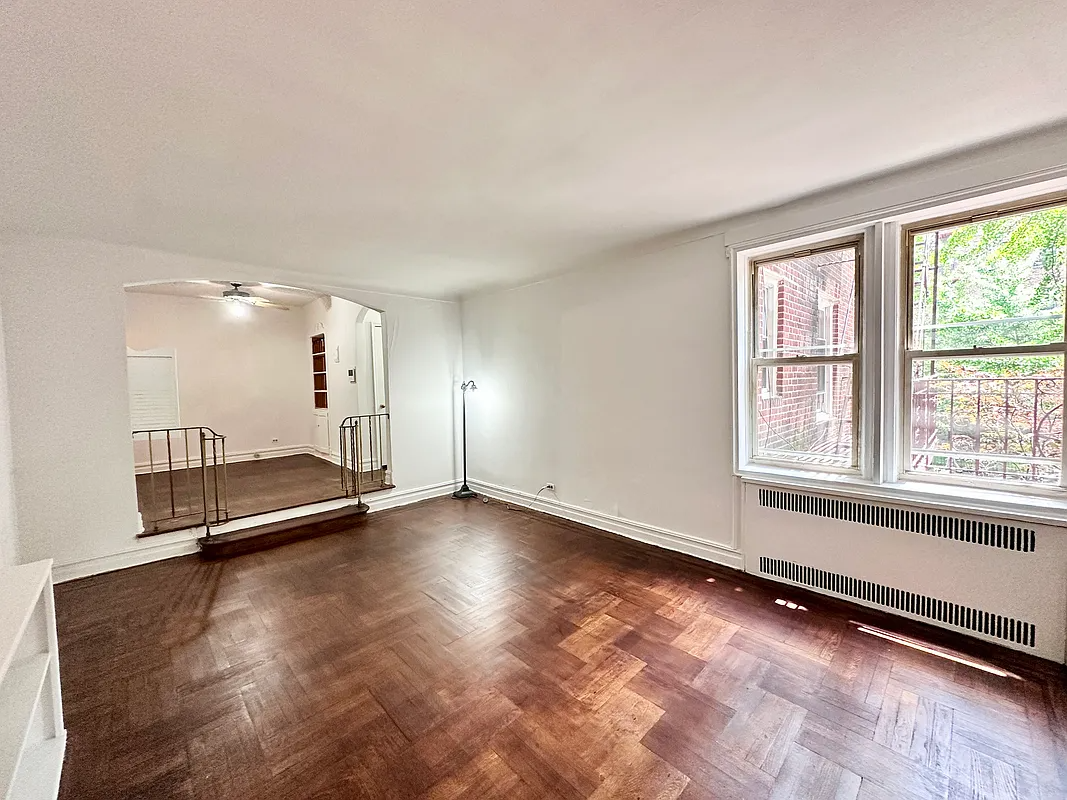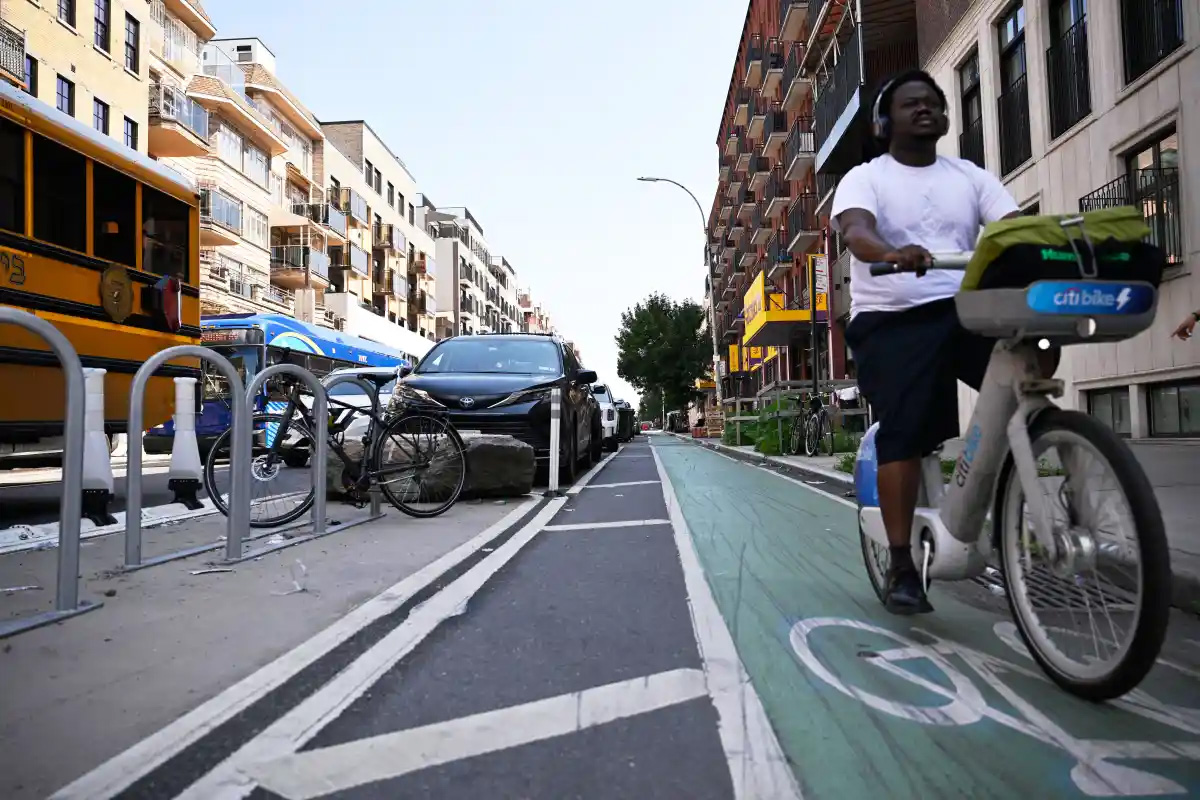Walkabout With Montrose: A Mighty Fortress, Part 2
Read Part 1 and Part 3 of this story. Armories were built for state National Guard units for three specific purposes: first as military facilities to store munitions, and to serve as headquarters for the gathering and training of troops. Secondly, as clubhouses and recreational spaces, armories provided comfortable, sometimes lavish private social facilities for…


Read Part 1 and Part 3 of this story.
Armories were built for state National Guard units for three specific purposes: first as military facilities to store munitions, and to serve as headquarters for the gathering and training of troops.
Secondly, as clubhouses and recreational spaces, armories provided comfortable, sometimes lavish private social facilities for the usually upper class officers, as well as for their men. Finally, as public monuments designed to inspire civic pride, public awe, and a healthy fear, armories loomed large as symbols of authority and law.
The last decades of the 19th century, and up until World War I, saw armories popping up all over the state. Many are remarkably similar, with masonry and brick towers and turrets, medieval and Gothic ramparts, crenellated parapets, portcullises, and wide sally ports, the arched entrance through which troops could march, at least four abreast.
All of these armories also feature large covered drill halls, which actually take up two-thirds of their mass. Although several architects were used to design these buildings, the overall framer of this armory style was the State’s Architect, Isaac C. Perry, who signed off on all the designs.
Between 1874 and 1926, ten armories were built in Brooklyn. Eight of them remain. Today’s three armories represent the earliest and the latest of Brooklyn’s armories. There are more photos on Flickr. The last group, next week, are Brooklyn’s most impressive.
The 3rd Battery Armory, Clermont Ave, Fort Greene. The Clermont Armory is the oldest standing Brooklyn armory. Originally home to the 23rd Regiment, the original building by William Mundell was completed in 1873.
The French Second Empire headquarters was backed by a huge vaulted drill hall of 130 by 180 feet, with 130′ wrought iron trusses spanning the width of the hall. At the time, it was the largest hall without pillars or obstructions in the US.

In 1911, the Clermont Ave. façade was extensively redesigned by architect Floyd Peterson, into the more fashionable Neo-Medieval style, and the building lost its tower and mansard roof. The building was used as an armory until 1964, when the city took it over for use as a warehouse for the Sanitation Dept.
Because of deteriorating conditions, due to lack of maintenance, the facility was vacated in 1989, at which time vandals, operating at night, looted the unsecured building, stripping the entire place of salvageable materials.
They stole the oak paneling, mantelpieces, and all detailing from the commander’s office and other rooms, and stripped the roof of all copper waterproofing, gutters and drains, thereby leaving the building vulnerable for further water damage.

In 1995, developers bought the badly deteriorated building at public auction, and through creative adaptive reuse, repurposed the armory as housing, with a courtyard adding necessary light into the center of the original drill hall.
Among the few original details to survive from the historic drill hall are three of the original trusses and some of the original masonry in the center courtyard. The photographs shown here are from the armoryliving.com website.
47th Regiment Armory, 355 Marcy Ave, Williamsburg. William Mundell also designed this armory for the 47th, a regiment that was deployed several times to quell riots and civil disturbances in the city after the Civil War.
The 1884 building was built on the site of the Union Grounds, one of Brooklyn’s earliest baseball parks. Union was one of the first baseball parks to charge spectators admission (10 cents), instead of charging the individual clubs rent.
The Brooklyn Eckfords were one of the professional ball clubs to call the Grounds home, playing other Brooklyn and NYC clubs, as well as Philadelphia and Hartford. Unfortunately, the Union Grounds eventually fell into disrepair, and were abandoned in 1882.

The 47th and the Bedford Armory were the only state sponsored armories in Brooklyn. All others were funded by the city, or Kings County. This armory was built for $125,000, and included 8 company rooms, the drill room, and 8 basement rifle galleries.
In 1899, the size of the armory was tripled by a new drill shed designed by Isaac Perry, in his typical style of corner towers with crenellated parapets and massive hipped roof with high clerestory windows. Various units occupied the armory throughout the 20th century, and part of it still is still used by the Guard.
Today, the enormous drill hall is more often used as a film studio, and was most recently used to film parts of Sherlock Holmes with Robert Downey and Jude Law. Other recent films include I am Legend, 28 Days, and Meet the Parents.
Troop C Armory, 1579 Bedford Ave, Crown Heights South. The last of the great armories to be built in Brownstone Brooklyn was the Troop C Armory, designed by the NYC firm of Pilcher and Tachau in 1903, and finished in 1907.
Lewis C. Pilcher had connections within the Armory Board, and in classic NYC tradition, won this contract, his first armory, and went on to design many more, eventually becoming head architect for the same state Armory Board.
Troop C’s design is a stylistic departure from Isaac Perry’s medieval castles, and features a two story administrative building with a large Tudor arched sally port, a three story gym and a huge stable wing on the south side of an enormous drill shed that overwhelms the rest of the complex.

Crenellated parapets surround the administrative and stable wings, and a tall tower, now gone, stood near President St. The Troop C Armory is also important as one of the earliest, most progressive examples of a cavalry armory, the only such armory in Brooklyn.
Up until the late 1880’s cavalrymen were expected to own and shelter their horses at their expense in their own facilities. Troop C was designed to house both cavalrymen and their horses.
Pilcher designed a series of separate stable wings with windows on three levels for cross ventilation, and a fourth level which led directly onto the drill shed riding floor. Improved engineering produced lighter and stronger trusses, which allowed for an extremely high drill shed roof, with two tiers of clerestory windows, greatly aiding in improved light and ventilation.

In 1921, all NY cavalry units were consolidated elsewhere into the 101st Cavalry, but the armory was still used to store and maintain heavy equipment such as artillery guns and tanks, which used to be rolled out and up Bedford Avenue for Brooklyn parades.
The National Guard still maintains an office there, and part of the building was used as a city shelter. After a hurricane destroyed much of Haiti in 1998, the armory was used as a drop off, storage, and shipping facility for tons of relief goods, much of it collected in the nearby Haitian community.
Most recently, the enormous drill shed has been used by film studios. Currently, they are filming Nicholas Cage’s new movie, The Sorcerer’s Apprentice there, so my photos show lots of Haddad location trucks, and, in a sneaky peek into the interior, I could see a huge cyclorama, an elaborate city street, and lots of lights, as well as tight security.
With its enormous roof and vast square footage, as well as ease in parking and access, it is hoped that the Troop C Armory can have a bright future as a film studio, and aid in raising the economic opportunities of the neighborhood. Much of the research for this article came from a fascinating book called New York’s Historic Armories by Nancy L. Todd. I highly recommend it.





A surface well scratched with this topic.
One interesting thing you left out about the 47th Regiment Armory, 355 Marcy Ave, in Williamsburg is that it was the epicenter of the early 90’s rave scene in Brooklyn (Fantasia, Sonic Boom, April Foolz, to name a few). Thousands of screaming, skipping, cuddling bedazzled kids wearing ski goggles and pollution masks lined with Vicks vapo rub, candy flipping their faces off in front of a WARP stack system with Adam X and Frankie Bones playing vinyl that sounded like an airport runway in the middle of a battlefield reverberating inside a steel drum. Hasidim in the area couldn’t believe their eyes. They peered out from behind their fenced in terraces at the frosty headed Liquid Sky labeled swarm all bouncing off the walls like lunatics. It’s a wonder these things never got shut down. Good vibes.
Elementary, my dear Watson.
Thank you, Montrose.
See Morris no one cares about Real Estate anymore, that was so 2008. People are more concerned with the after effects of the collapse! The Mutant Asset Bubble is no more so I think that you and others better shift you focus on other things like staying alive.
The What (8 Comments, ROTFLMMFAO! Maybe we can blame the weather)
Someday this war is gonna end…
Again, fascinating stuff.
Yes, great article. I’ve been inside the Clermont one, its a shame nothing could’ve been saved. Armories make great community/rec centers. I wish they would convert the one on Atlantic but because of politics it’s currently a nuisance.
I love the old photo of the Clermont Amory… I wish that one would have been left alone… Great work Montrose Morris
This was fun to read, especially as we did not have anything similar in the UK, so I have always been curious about the armories.
Montrose, I look forward to these articles each week – thanks again.
Thanks Montrose – Fascinating. It would be great to see these buildings becoming assets to the communities again (specifically thinking of the CH and BS ones…)
Great insight. Thanks Montrose.